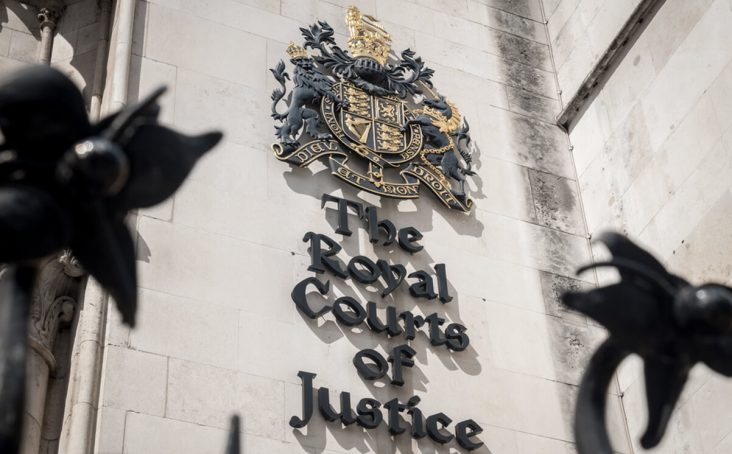A consent order is the legal process of settling finances outside of a divorce and is key in to ensuring both parties receive a fair split of their finances and assets.
Going through a divorce can be extremely challenging, both in terms of the legal process and managing the emotional impact of relationship breakdown. On top of this, many couples do not realise the financial arrangements need to be dealt with separately from the divorce process to obtain a legally binding outcome.
Many couples reach an agreement on how their finances will be divided on divorce, and this is encouraged. A consent order is the legal process of concluding financial arrangements on divorce and is key to ensuring both parties receive a fair split of their finances and assets.
We explore consent orders in detail and the steps that need to be taken.
What is a court consent order?
A consent order is a document that details the financial agreement reached by the parties involved in a divorce. Once a judge has approved it, it is legally binding and can be enforced should either party later breach the terms of the order. In the absence of a consent order, either party could make a financial claim against the other in the future.
A consent order sets out how the finances will be split between both parties and can include:
- savings
- property
- pensions
- debts
- investments
It can also contain provisions for regular payments between the parties, including child maintenance. However, payments relating to the children are only legally binding for 12 months, after which the Child Maintenance Service (CMS) has jurisdiction should either party apply for an assessment.
As mentioned, a consent order can be made where financial assets, such as property, pensions or savings, need to be divided. Provision may also be made for ongoing maintenance, for example, that there will be ongoing financial responsibilities in respect of those assets. It can, however, prevent either person from making a financial claim against the other in the future.
A clean break consent order
A clean break consent order can be made in relation to income or income and capital. Such an order severs the financial ties between a couple on divorce but will only be made where appropriate. A clean break in relation to income and capital may be made when the parties do not have any assets or liabilities they intend to divide, for example, where each party has their own bank accounts and there is no property to be divided. There may also be no provision for ongoing maintenance for a spouse where both parties earn comparable amounts. This would be an immediate clean break.
A clean break can also be deferred until a future date, so spousal maintenance may be made for a fixed term, after which a clean break would be effected.
A clean break order made by consent allows a couple to end their financial commitment to each other and makes it clear that neither can make a financial claim against the other in the future, including contesting a will.
How long does a consent order take to be approved?
It can take between four and 10 weeks for a consent order to be approved by the court, though this will depend on the court and the complexity of the order. The digitisation of the court process has led to efficiencies that may mean a consent order is approved in a relatively short timeframe.
Do I still need a consent order if we have no financial assets?
Ideally, yes. You should consider getting a clean break consent order even if you do not have any assets. This will ensure any future claims between the parties will be dismissed. Without a consent order, there is always a possibility of a future claim being made.
Can you get divorced without a consent order?
Yes, you can get divorced without a consent order as they are separate legal proceedings, although this is not advisable. An individual can apply for a consent order once a conditional order (or decree nisi) has been made, but it is not binding until the court has approved it and you have obtained a final divorce order (or decree absolute, if divorce proceedings were issued before 6 April 2022).
Can you get a consent order after divorce?
Yes, you can apply for a consent order any time after a divorce is finalised. However, it is recommended you apply for a consent order without delay.
How do we agree a consent order?
You can either agree on the terms of a consent order between yourselves or through a third party such as a solicitor, mediator or family member. If you have both agreed, it is worth instructing a solicitor to review the terms of the order and give their opinion as to whether a judge is likely to approve the consent order.
What happens if you don’t agree on the financial split?
If you are unable to agree a financial split, you can apply to the court to make a financial order on your behalf. This will involve one party commencing financial proceedings. Before doing this, you may wish to consider family mediation, solicitor negotiation or a barrister’s opinion. A barrister’s opinion involves an independent family law barrister writing a report on what the law is, how it applies to your case and the likely outcome if you went to court.
If court proceedings are commenced and you instruct a solicitor or barrister to represent you, the three hearings required to make a financial order could take a minimum of 12 months. It will also result in the parties incurring significant legal fees unless an agreement can be reached during the proceedings. It is quicker, cheaper and less stressful if the parties can reach an agreement outside of court.
Consent order process
There are several steps in the process of obtaining a consent order.
1.Gather the information needed to prepare a statement of information
You will need to send a statement of information along with your application, which requires information including:
- personal details, including the length of the marriage
- the approximate value of any assets and income of both parties
- any property to be transferred, including mortgage debt (which requires a statement that you have notified the lender and they do not object)
- any future payments for the property of both involved parties
- whether either party has the intention, or already has, remarried or entered a long-term relationship
- any matter relating to children
The statement (also known as Form D81) will provide context to the court so it can decide if the consent order would be fair and proper.
2. Draft a proposed consent order
A consent order document sets out the arrangement or terms you hope to achieve with the order. You can complete this or ask a solicitor to draft the document for you.
Although cheaper to apply for it yourself, it requires cooperation from both parties. Instructing a solicitor to review the terms of the consent order before you file it with the court is advisable.
3. Complete the application for a consent order
You will then need to complete an application form to have your draft consent order completed. This is called a “Form A: Notice of [intention to proceed with] an application for a financial order”, which formally ‘opens’ up your financial claims if you have not already done so in your divorce application. The form will be marked ‘For Dismissal Purposes Only’ as you are not asking the court to list a hearing to hear your financial claims. It is merely procedural. If you apply online, the Form A is embedded into your application for a Consent Order.
4. Send the application, supporting documents and fee to a court
Following these steps, you then need to send the following to the court:
- Statement of information (Form D81) signed by both parties
- an application for a consent order (Form A: Notice of [intention to proceed with] an application for a financial order, marked ‘for dismissal purposes only’)
- three copies of your proposed consent order: one unsigned, one signed by you and one signed by the other party
- a cheque for the court fee
Don’t forget to keep copies of all the documents you send and send a copy to the other party involved.
It is mandatory for a solicitor to apply for a consent order online where they represent the applicant.
5. The court approves your proposed consent order
If the consent order is deemed fair by the judge, it will be approved, with neither party having to attend court. The court will then return the approved order to both parties and the solicitor if needed.
If a judge deems the consent order unfair, the draft order will not be approved. The judge is likely to ask questions or ask you to explain a particular part of the order to them, to which you will need to respond.
Can you have a divorce consent order rejected?
Yes, a judge can reject a consent order if they do not believe it is fair. Unlike other court orders, a legally binding consent order cannot be varied or set aside unless there are exceptional circumstances. Therefore, a judge may decide that one party is being treated unfairly or the order is inequitable, so it can be amended before being made binding.
Is it possible to change a consent order agreement?
Yes, if both parties agree to make changes, a consent order can be amended. To do this, you will need to re-draft and re-submit the consent order for the court to approve. When the new consent order is approved, the old one will be set aside at the same time.
However, if both parties do not agree, it is not possible to make any amends once the document is signed, as it is legally binding. You may be able to challenge the order in exceptional circumstances, including:
- the other party did not fully disclose their true financial position, ie hiding significant assets
- there was fraud or misrepresentation, ie the asset valuation was inaccurate
- the order was signed under duress, or there was a lack of mental capacity, such as due to mental illness
- an unexpected event occurs soon after the consent order is signed that completely undermines the original terms, ie a large inheritance or a lottery win
Find out more
If you would like more advice on consent orders on divorce, contact Stewarts today. Our friendly and experienced divorce and family lawyers will take time to understand the issues you face and are on hand and ready to answer any questions you might have about consent orders.
Our team of divorce and family lawyers has unrivalled strength and depth and can advise on all aspects of divorce and family law.
-
Our divorce and family expertise
-
Agreements
-
Children
-
Divorce and separation
-
Financial provision
-
Court and alternatives
-
Resources
"They have star performers, strength in depth and the support of first-class supporting departments. That's the mark of a top-tier firm"
Chambers High Net Worth
"Stewarts' divorce and family team is a litigation powerhouse that has a top array of vastly experienced lawyers"
The Legal 500
"Highly sought after by high-profile clients and ultra high net worth individuals. Well versed in handling matrimonial proceedings with international elements, complex matrimonial finance matters, private children law and cohabitation disputes"
Chambers
Meet the Divorce and Family team
Our team is the pre-eminent divorce and family practice in the UK, ranked No.1 in both The Legal 500 and Chambers.
In an article in The Times, head of department Stephen Foster is “praised for leading Stewarts’ phalanx of family lawyers to the top of the pack”.

If you require assistance, please call us or email your enquiry.
Featured case
Court of Appeal judgment confirms that a child’s welfare is paramount in decisions regarding relocation within the UK.

Stewarts Private - Dispute Management
Stewarts Private is a dedicated dispute management service that helps our clients avoid, manage and resolve disputes. We provide strategic advice to assist in navigating serious, complex and challenging situations.








